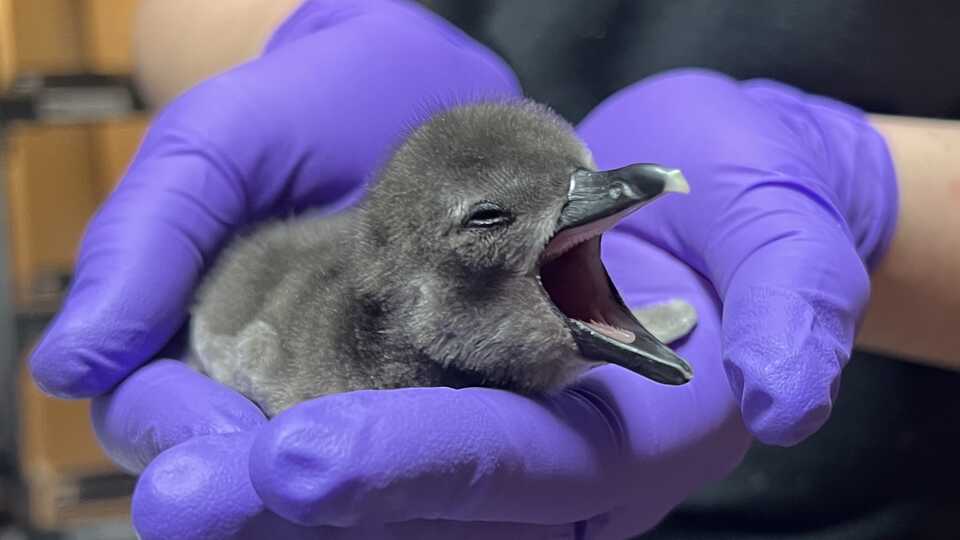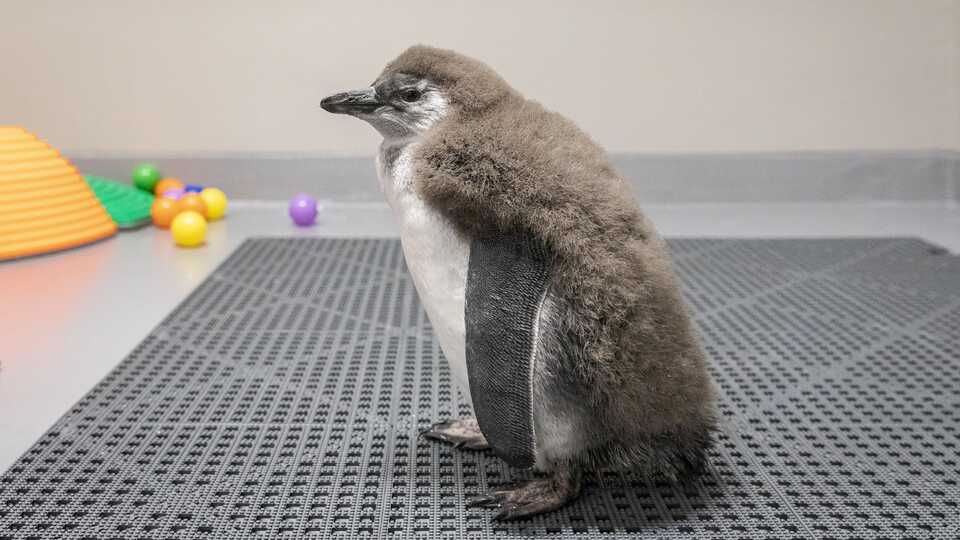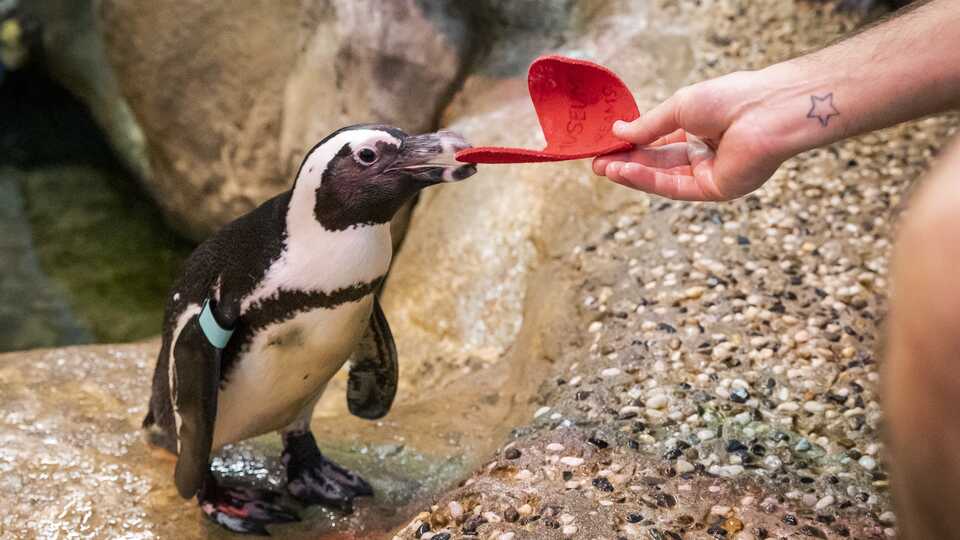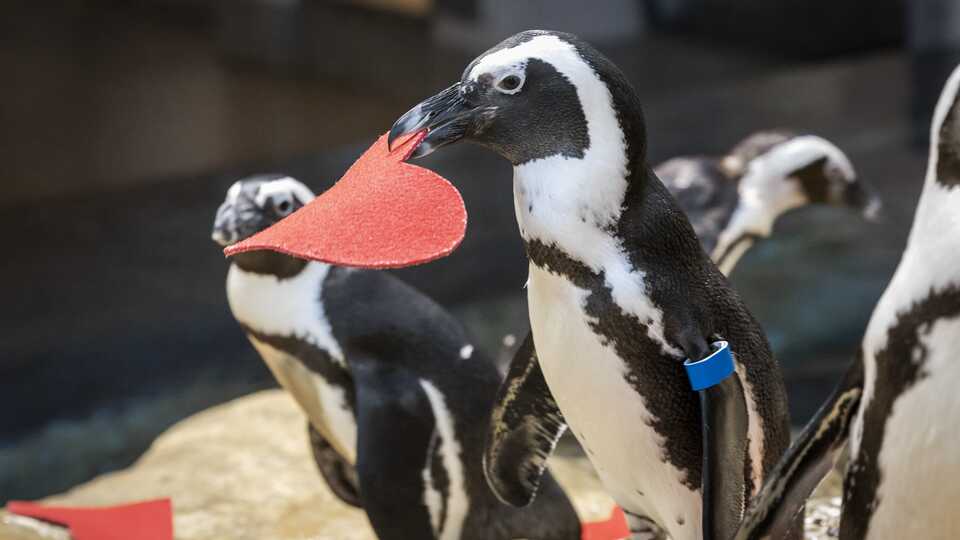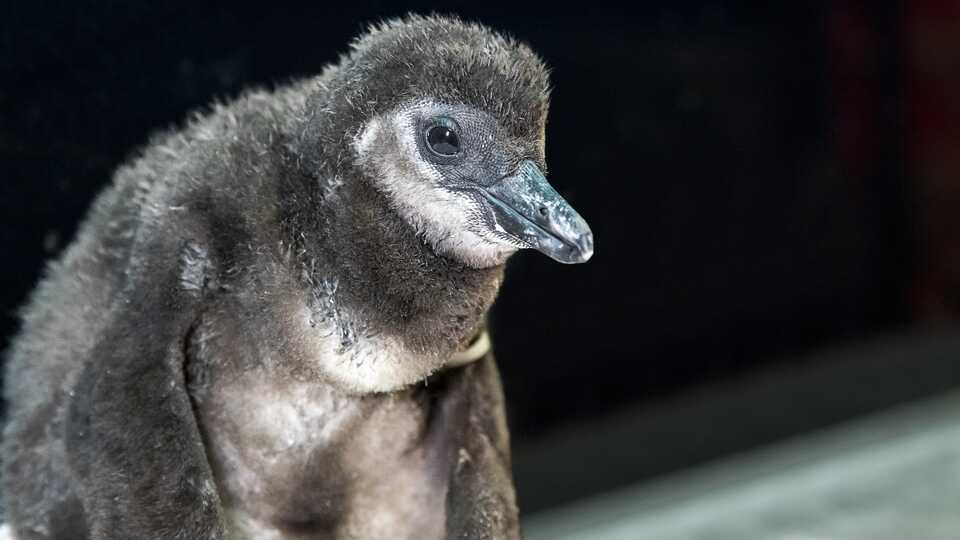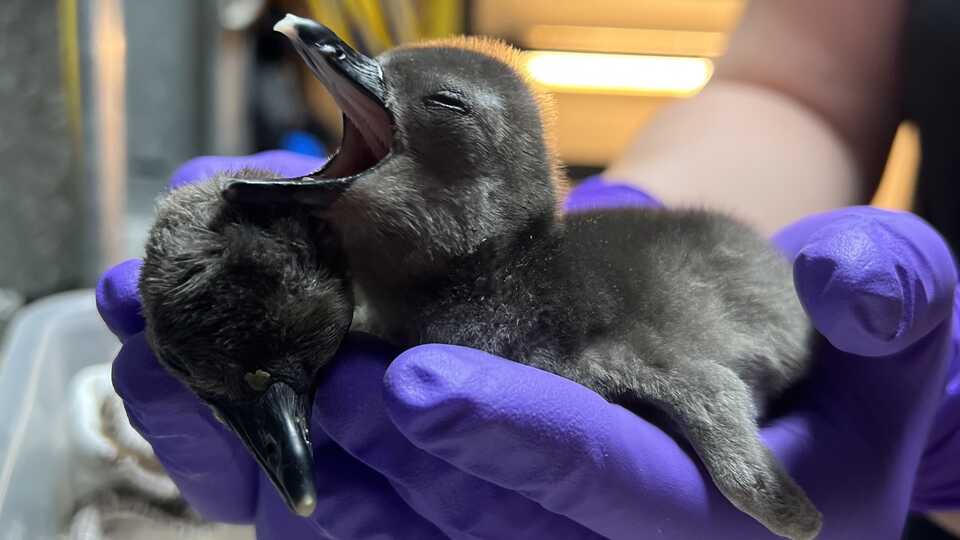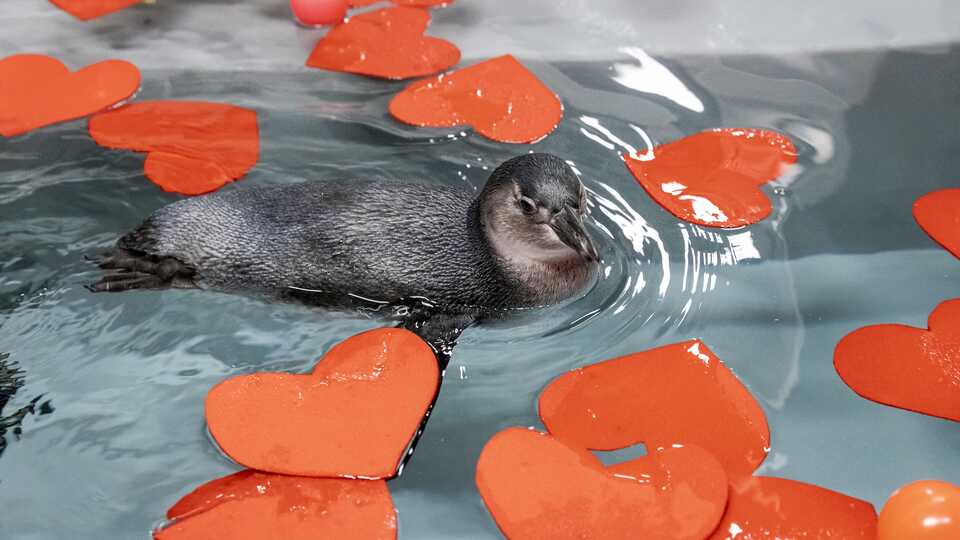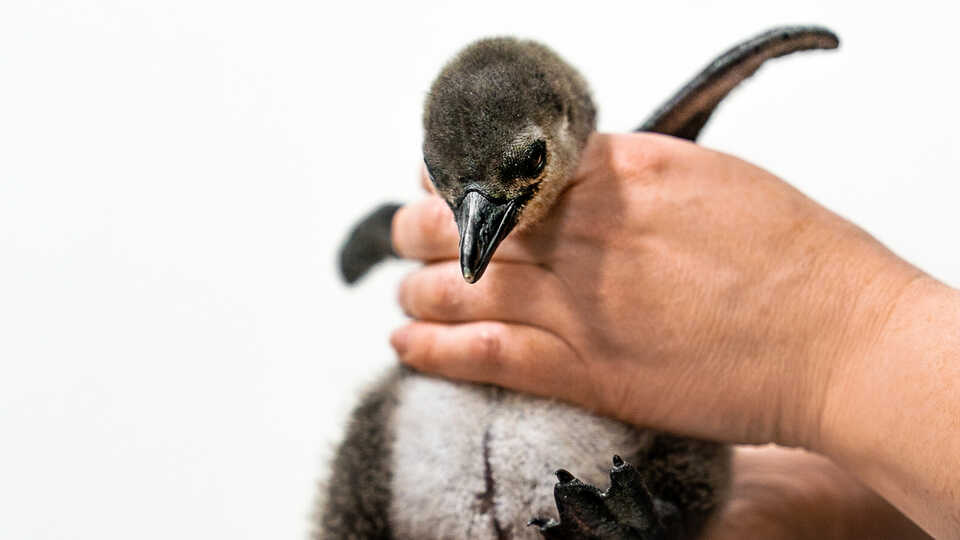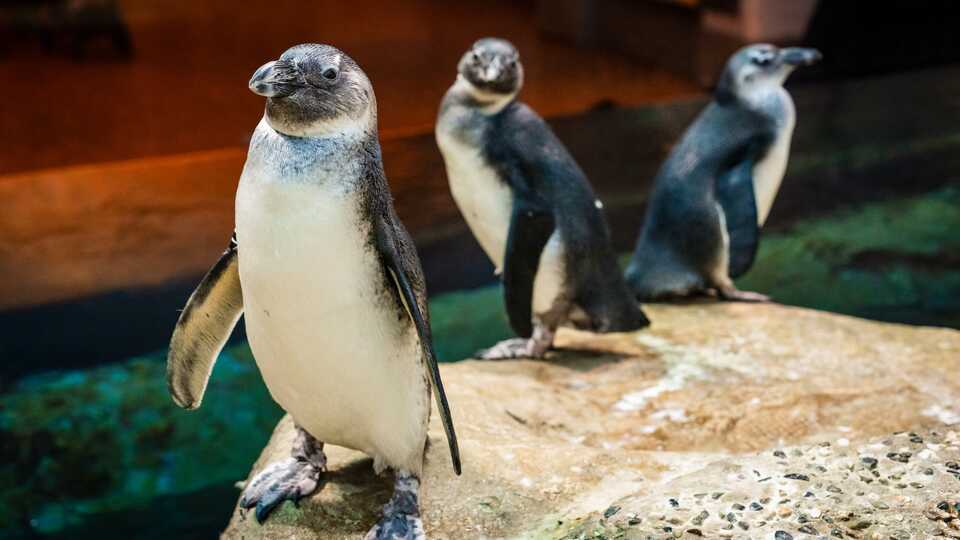Four new African penguin chicks to take part in their first Penguin Valentines event on February 14
SAN FRANCISCO, CA (February 7, 2024) — The California Academy of Sciences is thrilled to announce that it has hatched a staggering 10 African penguin chicks over a period of 14 months, bred as part of the Academy’s participation in a Species Survival Plan (SSP) to conserve this endangered bird.
The steady parade of adorable arrivals began in November 2022, ending a four year period without any new chicks, and continued through January 2024. Steinhart Aquarium biologist Sparks Perkins reflects, “To hatch 10 chicks in just 14 months is truly remarkable, especially if you consider the previous 10 chicks hatched over a period of 10 years. Our penguin care team has years of training in the art and science of egg incubation and chick rearing. We are thrilled to be putting our expertise towards caring for the next generation of African penguins in human care.”
The bounty of chicks is a welcome addition to the endangered African penguin population, which has dipped to 9,000 breeding pairs in the wild. The Academy has been a longtime participant in the Association of Zoos and Aquariums (AZA) SSP, a collaborative breeding and transfer program among accredited institutions that is dedicated to maintaining genetic diversity in the resident population of African penguins.
“African Penguins are such a charismatic species, but sadly threats like overfishing, habitat degradation, and oil spills have had a devastating effect on wild populations. These issues extend beyond penguins, too— the birds are a visible indicator for the marine environment, and when we see penguin colonies in decline we know there’s trouble for other marine species,” shares Brenda Melton, Director of Animal Care and Wellbeing at Steinhart Aquarium and member of the African Penguin Saving Animals From Extinction (SAFE) steering committee. “Every chick we welcome strengthens the genetics and overall population of the species in human care. More than a million people come through the museum each year, which is an incredible opportunity to educate about these birds and the challenges they face in the wild, and hopefully ignite care for all animals facing threats and endangerment.”
In addition to Steinhart Aquarium’s efforts to sustain the resident population of African penguins within zoos and aquariums, Academy biologists also further this critical sustainability work in the field in partnership with the Southern African Foundation For The Conservation Of Coastal Birds (SANCCOB). Since 2014, two Academy biologists have traveled to South Africa biennially to support SANCCOB’s Chick Bolstering Project, in which biologists, rangers, and rescue teams collect and hand-rear abandoned eggs and chicks and prepare them for release back into their environment.
CHICKS JOIN PENGUIN VALENTINES - FEBRUARY 14, 10:30 AM
Four chicks can currently be seen in the Academy's African penguin exhibit, just in time for the beloved annual Penguin Valentines program, Wednesday, February 14 at 10:30 am. Juveniles Ozzie, Fyn, Iggie, and Lazola will join the rest of the colony as they receive heart shaped felt valentines to use as nesting material in their nest boxes.
In the wild, African penguins make nests by burrowing and lining their nest with available materials, which can include leaves, sticks, and rocks. In their habitat at the Academy, each penguin pair is furnished with a nest box, which they happily line with the nesting material valentines. This not only provides enrichment for the birds, but encourages breeding behavior and helps penguin pairs bond.
Visitors can watch biologists hand out valentines to the penguins on Wednesday, February 14 at 10:30 am in Tusher African Hall, or stream it online.
PARENTS AND CHICKS: WHO’S WHO
The Academy’s African penguin colony is made up of 21 dynamic birds, each with their own distinct personality. Under guidance from the SSP, birds are placed into recommended breeding pairs based on complementary genetics that will help strengthen the African penguin population worldwide.
Since November 2022, three sets of recommended breeding pairs have hatched chicks:
- Parents Stanlee (f) and Bernie (m):
- Pogo (f), hatched November 1, 2022, and was named through a social media contest. In summer of 2023 she joined the African penguin colony at the National Aviary in Pennsylvania, a fellow SSP institution.
- *Fyn (f), hatched August 1, 2023, was named for fynbos, a distinctive type of vegetation found only on the southern tip of Africa. She joined the rest of the Academy colony on exhibit in Tusher African Hall in January 2024, where she can currently be seen.
- Nelson (m), hatched November 21, 2023, was named to honor anti-apartheid activist and former president of South Africa Nelson Mandela. He is currently being cared for behind the scenes at Steinhart Aquarium.
- Alice (f), hatched November 23, 2023, was named for pioneering botanist and Academy curatorAlice Eastwood. She is currently being cared for behind the scenes at Steinhart Aquarium.
- **Sadly, a second chick hatched in November 2022 and passed away at 30 days.
- Parents Poppy (f) and Darcy (m):
- *Oswald Cobblepot (f), or Ozzie for short, hatched on December 6, 2022. Named after the betuxed Batman villain, Ozzie can currently be spotted in the Academy’s African penguin exhibit.
- *Ignatz (m), or Iggie for short, hatched on February 15, 2023. Iggie hatched during Steinhart Aquarium’s centennial year, and was named to honor philanthropist Ignatz Steinhart, whose generous donation enabled the construction of Steinhart Aquarium in 1923. As of January 2024, Iggie can be spotted in the Academy's African penguin exhibit.
- *Lazola (m), hatched February 18, 2023. He is named for Zamokuhle Lazola, a South African seabird ranger whose dedicated work to monitor and rescue penguins in the wild is a critical support for the endangered species. Lazola can be seen on exhibit in Tusher African hall along with his brother and sister.
- Parents Parker (f) and Tux (m):
- Alpha chick (sex TBD) hatched January 12, 2024. Yet-to-be-named, this very young little fuzzball is the first chick for the recommended pair Parker and Tux. They are currently being cared for behind the scenes at Steinhart Aquarium.
- **Sadly, a second chick hatched January 2024 passed away after just a few days.
*Indicates chicks currently on view in the African penguin exhibit in Tusher African Hall
**African Penguins lay two eggs per clutch, and due to a variety of issues related to egg and chick developmental health typically only raise one chick to fledging. It’s more often possible to raise two chicks to fledging in human care; however chicks can still be impacted by developmental issues and other factors outside of our control.
CARING FOR CHICKS
Every penguin chick at Steinhart Aquarium gets the best in care, nutrition, and enrichment from the moment they hatch. Their care follows a standard course, which begins with a 21-day period spent in their nest box with their parents, after which they are moved behind the scenes to be cared for by Academy staff, a practice that helps minimize risk to the birds while they are still young and vulnerable.
During their first few months behind the scenes in the aquarium the chicks attend “fish school,” where all baby penguins learn to swim on their own and eat fish given to them by biologists, important life skills they’ll need when joining the other penguins in Academy’s bustling colony. Each day at fish school also includes daily enrichment sessions with aquarium biologists to help keep the birds stimulated and engaged, which can include painting, bubbles, playing with a laser pointer, ice cakes, and a tablet for audio and visual enrichment.
After about three months, chicks are evaluated for buoyancy and waterproofness, ability to get in and out of the water and swim with ease, and ability to eat on their own. They are then introduced to the colony, where they will stay for anywhere from 4 months to several years. Under the guidance of the SSP, each bird will be assigned a recommended mate and transferred to the mate’s corresponding SSP partner facility to bond and hopefully continue to grow the African penguin population in human care.
MEDIA ASSETS
- Press are invited to attend and cover Penguin Valentines on Wednesday, February 14 at 10:30 am. New chicks Ozzie, Lazola, Fyn, and Iggie will be receiving valentines. Press enter through the business entrance at 75 Nancy Pelosi Drive.
- IMAGES:
- Photos of the chicks taken Feb. 2024 by Gayle Laird (unless otherwise specified), and photos of other chicks taken since 2022
- Penguin Valentine photos by Gayle Laird
- Watch the penguins frolic, swim, and nest on three live webcams
- Chick spotting tip: Juveniles are darker than their adult counterparts, with less contrast
- Meet our African Penguins bird bios and identification cheat sheet
- Interviews with Steinhart Aquarium biologists available upon request
Press Contacts
If you are a journalist and would like to receive Academy press releases please contact press@calacademy.org.
Digital Assets
Hi-res and low-res image downloads are available for editorial use. Contact us at press@calacademy.org to request access.
